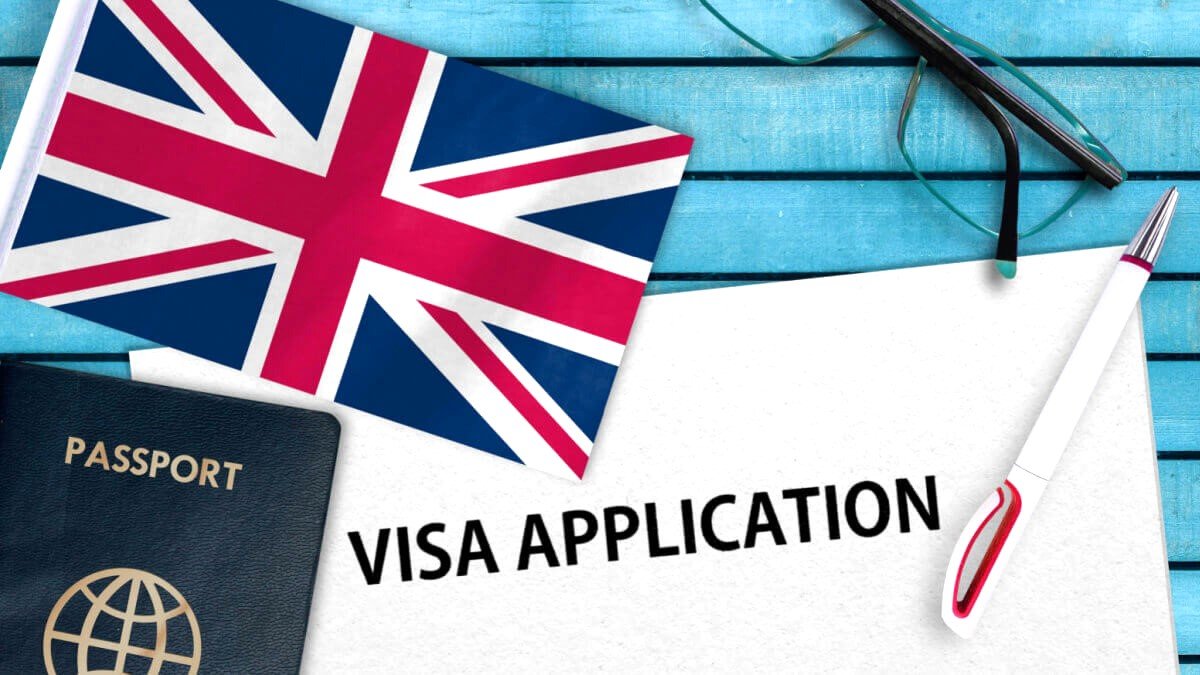AI and Immigration in 2023: Navigating the Future Landscape

Artificial intelligence (AI) and immigration, two seemingly distinct realms, are converging in a transformative dance, shaping the future of global mobility. As technology advances, immigration processes are undergoing a paradigm shift, leveraging AI to enhance efficiency and security. This article delves into the intricate relationship between AI and immigration, exploring the impacts, challenges, and future trends.
Introduction
Definition of AI
Artificial intelligence, or AI, refers to the development of computer systems capable of performing tasks that typically require human intelligence. In the context of immigration, AI is revolutionizing traditional processes, introducing speed, accuracy, and innovative solutions.
Significance of Immigration
Immigration, a crucial aspect of global dynamics, involves the movement of individuals across borders for various reasons, such as work, study, or seeking refuge. The efficient management of immigration is essential for economic growth, cultural exchange, and humanitarian causes.
The Intersection of AI and Immigration
The use of technology to streamline and improve various aspects of the immigration process—from application submission to border control and beyond—marks the intersection of AI and immigration.
AI Transforming Immigration Processes
Automated Document Verification
One significant stride in the marriage of AI and immigration is automated document verification. AI algorithms can swiftly and accurately verify the authenticity of documents submitted during the immigration process, reducing the risk of fraud.
In traditional processes, human agents would manually examine documents, a time-consuming and error-prone task. With AI, this process becomes automated, enhancing accuracy and efficiency. Advanced pattern recognition and authentication algorithms ensure that submitted documents, such as passports and visas, are legitimate.
Predictive Analytics for Visa Approvals
Predictive analytics, powered by AI, is reshaping visa approval processes. By analyzing historical data, AI systems can predict the likelihood of an applicant adhering to visa conditions, aiding immigration officers in decision-making.
This predictive capability reduces the subjectivity associated with human decision-making, making the process more objective and data-driven. It considers various factors, including an applicant’s travel history, financial stability, and previous adherence to visa conditions. The result is a more informed and efficient visa approval process.
AI-Assisted Language Processing in Immigration Interviews
Language barriers often complicate immigration interviews. AI-driven language processing tools can bridge this gap by providing real-time translation and interpretation services, ensuring effective communication and understanding.
In scenarios where immigration officers and applicants speak different languages, AI-powered language processing becomes invaluable. It ensures that both parties can communicate seamlessly, facilitating a smoother interview process. This technology contributes to a more inclusive and accessible immigration system.
AI in Border Security
Surveillance and Monitoring
AI’s role in border security extends to advanced surveillance and monitoring systems. Smart cameras equipped with facial recognition technology enhance border control, identifying individuals of interest efficiently.
Traditional border security relies heavily on manual surveillance, which can be prone to human error and fatigue. AI-powered surveillance systems continuously monitor border areas, detecting and identifying potential threats in real-time. Facial recognition technology enhances security measures, allowing for swift and accurate identification of individuals crossing borders.
Automated Threat Detection
Automated threat detection, utilizing AI algorithms, enhances border security by identifying potential risks in real-time. This proactive approach strengthens national security measures.
AI can analyze patterns and anomalies in data, enabling the detection of suspicious activities or individuals. This level of automation ensures a rapid response to potential threats, preventing security breaches. By augmenting human capabilities, AI contributes to a more robust and proactive border security infrastructure.
Enhanced Data Analysis
The vast amount of data involved in immigration processes can be overwhelming. AI excels in data analysis, extracting meaningful insights that aid immigration agencies in making informed decisions.
AI’s ability to process and analyze large datasets goes beyond human capacity. It identifies trends, potential security risks, and areas for process improvement. This data-driven approach enables immigration agencies to make well-informed decisions, enhancing overall operational efficiency.
Ethical Considerations
Bias in AI Algorithms
One pressing concern is the potential bias in AI algorithms, which may lead to discriminatory outcomes. Addressing and mitigating bias is paramount to ensuring fair and just immigration practices.
AI algorithms are trained on historical data, and if this data contains biases, the algorithms may perpetuate and amplify those biases. In the context of immigration, this could lead to unfair treatment of certain demographic groups. Developers and policymakers must implement measures that identify and rectify discrimination in AI systems, ensuring equitable outcomes.
Privacy Concerns in Immigration Data
The collection and utilization of vast amounts of personal data in immigration processes raise privacy concerns. Striking a balance between effective immigration management and individual privacy is crucial.
As AI processes large volumes of sensitive personal information, there is a need for stringent data protection measures. Encryption, secure storage, and transparent data handling practices are essential to safeguarding individuals’ privacy. Striking this balance ensures that the benefits of AI in immigration are achieved without compromising personal data security.
Ensuring Fair and Just Practices
AI should be employed as a tool to complement human decision-making, not replace it entirely. Implementing policies and practices that uphold fairness and justice in immigration procedures is essential.
Human oversight is critical to ensuring that AI systems align with ethical standards. Despite the fact that AI can increase efficiency, human judgment must always be the primary factor in decisions affecting people’s lives. Striking a balance between the capabilities of AI and the ethical considerations of immigration processes is imperative.
Challenges and Opportunities
Integration Issues
Integrating AI into existing immigration systems poses challenges, including technical compatibility and resistance to change. Overcoming these hurdles is necessary for successful implementation.
The integration of AI requires collaboration between technology experts and immigration agencies. Ensuring that AI systems seamlessly integrate with existing infrastructure and processes is a complex task. Addressing technical challenges and fostering a culture of openness to technological advancements are key to overcoming integration issues.
Skill Gap in Immigration Agencies
Ensuring that immigration officers possess the necessary skills to work alongside AI systems is a vital consideration. Training programs and upskilling initiatives can bridge the gap.
The introduction of AI necessitates a shift in the skill set required for immigration officers. Training programs should not only focus on the technical aspects of AI but also on developing the capacity to interpret and use AI-generated insights. This dual approach ensures that AI becomes a valuable tool for immigration officers rather than a source of apprehension.
Potential Improvements
AI presents opportunities for continuous improvement in immigration processes. Feedback loops and iterative enhancements can result in more efficient and effective systems.
Continuous monitoring and assessment of AI applications in immigration enable agencies to identify areas for improvement. Feedback from users and stakeholders contributes to iterative developments, ensuring that AI systems evolve to meet the changing needs of immigration processes. This adaptability is crucial for staying ahead of emerging challenges.
Read More: Wrongful Termination: Understanding Your Rights 2023
Future Trends
AI Advancements in Immigration
Anticipating the future, AI will continue to evolve, bringing about advancements in immigration technology. From enhanced biometric identification to sophisticated risk assessment, the possibilities are expansive.
The relentless pace of technological advancement opens avenues for AI to revolutionize immigration processes further. Improved accuracy in identity verification, enhanced predictive capabilities, and the integration of emerging technologies will shape the future landscape of AI in immigration.
Policy Implications
The integration of AI in immigration necessitates robust policies that govern its ethical use. Collaborative efforts between governments, technology developers, and advocacy groups are crucial to creating responsible frameworks.
Developing comprehensive policies that address ethical considerations, privacy concerns, and the responsible use of AI in immigration is essential. Governments play a pivotal role in establishing frameworks that guide the development and deployment of AI technologies in immigration processes. Collaboration with relevant stakeholders ensures that policies are well-informed and effectively implemented.
Balancing Technology and Human Touch
While AI streamlines processes, maintaining a human touch in immigration is paramount. Striking a balance between technological efficiency and compassionate decision-making ensures a holistic approach.
AI cannot take the place of the human aspect of immigration, which involves empathy, cultural awareness, and thoughtful decision-making. While technology enhances efficiency, it is crucial to preserve the human touch in interactions between immigration officers and applicants. This balance contributes to a more humane and compassionate immigration system.
Case Studies
Successful Implementations
Exploring case studies of countries successfully implementing AI in immigration provides insights into best practices and lessons learned.
Countries that have effectively integrated AI into their immigration systems can serve as models for others. Understanding the strategies, challenges faced, and outcomes of these implementations provides valuable guidance for countries looking to adopt similar technologies.
Lessons Learned
Understanding the challenges faced by early adopters of AI in immigration informs future strategies, allowing for more seamless implementation.
Learning from the experiences of those who have pioneered the use of AI in immigration helps avoid common pitfalls. Lessons learned can guide the development of strategies that address challenges and ensure a smoother transition to AI-enhanced immigration processes.
Impact on Immigration Efficiency
Analyzing the impact of AI on immigration efficiency showcases tangible benefits, such as reduced processing times and enhanced security measures.
Measuring the effectiveness of AI in immigration requires a comprehensive analysis of its impact on efficiency. Reduced processing times, improved accuracy in decision-making, and enhanced security measures are key indicators of the positive influence of AI on immigration processes.
Public Perception
Trust in AI Systems
Building public trust in AI systems used in immigration is crucial. Transparency in processes and clear communication contribute to a positive perception.
Public trust in AI is contingent on transparency regarding how these systems are used in immigration processes. Clear communication about the benefits and limitations of AI, as well as measures taken to address ethical considerations, fosters trust among the public.
Addressing Misconceptions
Educating the public about AI’s role in immigration dispels misconceptions and fosters a more informed and supportive community.
Misconceptions about AI, such as fears of job displacement or privacy infringements, can hinder its acceptance. Public education campaigns that provide accurate information about the role and benefits of AI in immigration contribute to a more positive perception.
Building Public Awareness
Raising awareness about the benefits of AI in immigration encourages public acceptance and collaboration in shaping future policies.
Public awareness campaigns highlighting the positive contributions of AI in immigration create a supportive environment for its integration. Informed public discourse ensures that the development and implementation of AI technologies align with societal values and expectations.
Conclusion
Summary of Key Points
AI’s integration into immigration processes signifies a transformative era, promising efficiency and security. However, addressing ethical concerns and ensuring a balance between technology and humanity is imperative for its success.
The marriage of AI and immigration holds immense potential for improving the efficiency and effectiveness of global mobility. From automated document verification to predictive analytics, AI brings forth innovative solutions. Nevertheless, ethical considerations, privacy concerns, and the preservation of human values must be at the forefront of this technological evolution.
The Future Landscape of AI and Immigration
As we navigate the future, the landscape of AI and immigration will continue to evolve. Collaborative efforts and responsible practices will shape a future where technology and compassion coexist in harmony.
The dynamic relationship between AI and immigration will evolve as technology advances and societal values shape policy decisions. Navigating this landscape requires a commitment to ethical practices, continuous improvement, and the recognition that AI is a tool to enhance, not replace, the human element in immigration processes.
FAQs
- Is AI replacing human decision-making in immigration processes?
- No, AI is designed to complement human decision-making, providing support and efficiency.
- How can countries address privacy concerns related to AI in immigration?
- Implementing robust data protection policies and ensuring transparent practices are crucial for addressing privacy concerns.
- What role does public perception play in the successful implementation of AI in immigration?
- Public trust and acceptance are pivotal. Educating the public and fostering awareness contribute to a positive reception of AI in immigration.
- Are there any notable challenges faced by countries integrating AI into their immigration systems?
- Yes, challenges include technical integration issues, skill gaps among immigration officers, and potential biases in AI algorithms.
- How can AI improve the efficiency of immigration processes?
- AI contributes to efficiency by automating document verification, enhancing border security, and providing predictive analytics for visa approvals.







